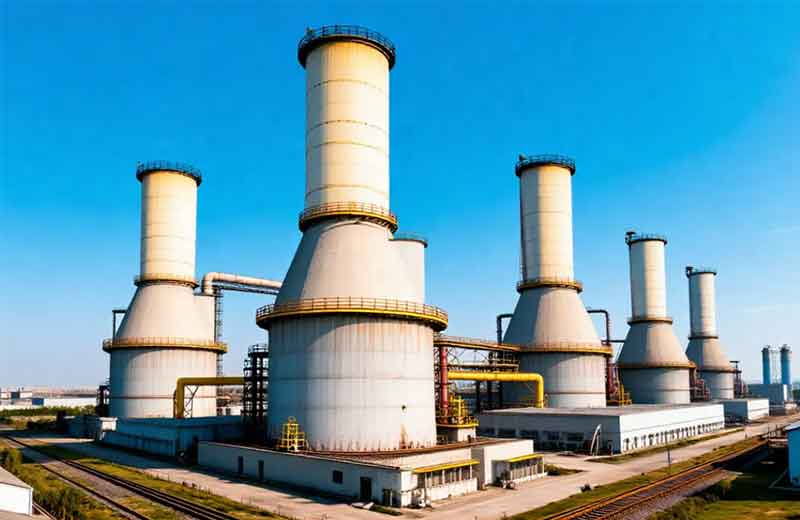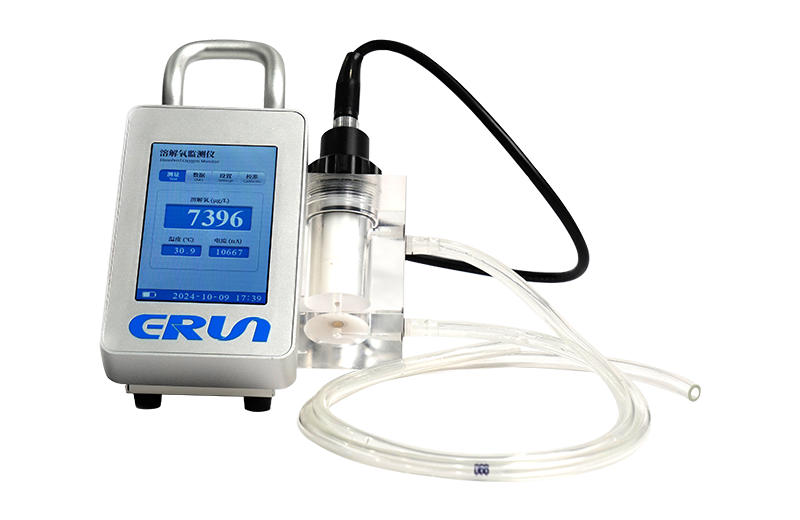Trace Dissolved Oxygen Testing in Power Plant Boilers: The "Lifeline" Protecting Unit Safety
Dissolved oxygen in power plant boiler water, even in extremely low concentrations, is the "number one killer" causing corrosion in thermal systems and threatening the safe operation of generating units. Therefore, accurate and continuous monitoring of trace dissolved oxygen is a core task in power plant chemical supervision, and its importance cannot be overstated.

1. Why "Nitpick" Over Tiny Amounts? The Significant Hazards of Trace Dissolved Oxygen
You might think having a little oxygen in water is normal—how harmful could it be? But for high-temperature, high-pressure boiler systems, even dissolved oxygen at the parts per billion (ppb) level can have devastating consequences.
Direct Attack by Oxygen Corrosion: Dissolved oxygen acts as a depolarizer, reacting with metallic iron in an electrochemical process that produces loose iron oxide (rust). This corrosion doesn't just uniformly thin pipe walls; more dangerously, it can cause pitting corrosion, creating pits and even perforations—like playing "whack-a-mole" on boiler pipes, where a single leak can force an unplanned shutdown.
Chain Reaction from Corrosion Products: The rust produced by corrosion can travel with the working fluid, depositing in areas of high heat load (like furnace tubes, turbine blades). This leads to under-deposit corrosion and reduced heat transfer efficiency, causing local tube wall overheating, bulging, or even tube bursts—a primary cause of major boiler accidents.
Substantial Economic Losses: A single unplanned shutdown can cost millions just in repair costs and lost power generation revenue, not to mention associated grid penalty fees and safety risks.
Real-World Warning: A 300MW unit, due to poor deaerator performance and outdated detection methods, had feedwater dissolved oxygen consistently lingering between 15-20 ppb (the national standard requires ≤7 ppb). During an annual overhaul inspection a year later, the economizer inlet sections were found covered with ulcer-like pitting, up to 1.2mm deep, necessitating large-scale tube replacement and direct losses exceeding one million yuan.
2. What Do National Standards Say? Mandatory Indicators for Boiler Dissolved Oxygen
Adhering to national standards is not just about compliance; it's a guideline for scientific operation. For power plant boilers, the most important standards are GB/T 12157-2022 "Determination of dissolved oxygen in industrial circulating cooling water and boiler water" and DL/T 912-2019 "Water and steam quality standards for supercritical fossil fuel power generating units".
The table below clearly lists the control indicators for key points:
Data Source: DL/T 912-2019 "Water and steam quality standards for supercritical fossil fuel power generating units"
As shown, the standard requirements for feedwater dissolved oxygen are extremely stringent, requiring monitoring precision at the ppb level.
3. Which Instrument to Use? The Practical Application of Portable Trace Oxygen Analyzers
Achieving the accuracy required by national standards is often beyond the capability of traditional methods. Modern power plants widely use portable trace dissolved oxygen analyzers based on the Luminescent Dissolved Oxygen (LDO) principle.
Why LDO? It has several key advantages:
Reagent-Free: No chemical consumption, no pollution, low maintenance, and reduced operating costs.
No Polarization Needed: Ready to measure upon startup, no long waiting for polarization, fast response.
Unaffected by Flow Rate: Stable measurements in water samples with varying flow rates, offering greater adaptability.
High Precision: Easily achieves ±1 ppb or better accuracy, fully meeting national standards.
Ubiquitous Application Scenarios for Portable Analyzers:
Routine Inspection & Diagnostics: Chemical operators can carry the instrument for mobile testing at key points like deaerator outlets, feed pump inlets, and economizer inlets, quickly identifying system issues.
Performance Acceptance & Comparison: Serves as a calibration standard for online analyzers, ensuring the reliability of continuous monitoring data.
Troubleshooting Emergencies: When abnormal oxygen level fluctuations occur, the portable analyzer can quickly locate the source of the problem, such as finding air in-leakage points.
4. Case Study: How a Portable Trace O2 Analyzer Solved a Field Problem
Background: A 600MW supercritical unit in East China showed feedwater oxygen content fluctuating between 5-6 ppb on its online dissolved oxygen meter, seemingly "qualified." However, minor pitting signs were still found in the economizer during a major overhaul.
Analysis & Action: Technicians used a high-precision WinRun Portable Trace Dissolved Oxygen Analyzer to conduct precise measurements at various offline points, including the deaerator downcomer and the feedwater pump seal water return line. Results revealed that while the oxygen content at the deaerator outlet itself was indeed qualified (4-5 ppb), the oxygen content at the feed pump seal water return point was as high as 25 ppb! This high-oxygen water was returning downstream of the deaerator, causing "localized exceedance."
Solution: Based on the data provided by the portable analyzer, the power plant switched the seal water source from condensate water to cleaner demineralized water. Subsequent retesting with the portable instrument showed oxygen levels at that point dropped to below 8 ppb, successfully eliminating a hidden source of oxygen contamination.
This case study fully demonstrates that a reliable portable trace oxygen analyzer is not just a "measurement tool" but a "diagnostic device" capable of revealing systemic hidden dangers that online analyzers cannot detect.
5. How to Choose a Reliable Portable Trace Dissolved Oxygen Analyzer?
When evaluating products on the market, consider the following points:
Core Principle: Prioritize Luminescent Dissolved Oxygen (LDO) for its advanced technology and simple maintenance.
Detection Range & Precision: Must cover 0-100 ppb range, with accuracy within ±1-2 ppb.
Calibration Features: Supports convenient field air calibration and zero calibration.
Data Logging: Features large-capacity data storage and export functions for traceability and analysis.
Protection & Portability: Rugged build, high IP rating, suitable for complex plant environments.
Brand & Service: Choose a brand with technical strength and good after-sales service.
For instance, the Portable Trace Dissolved Oxygen Analyzer offered by WinRun Environmental is designed based on these needs. It uses an advanced LDO sensor, requires no warm-up, allows direct high-precision measurement, covers a range of 0-200 ppb, and is well-suited for daily inspection, fault diagnosis, and online analyzer calibration in power plants. You can visit this link to learn more about this instrument's detailed parameters and application cases.

Conclusion
In summary, for power plant boilers, "trace" dissolved oxygen is by no means "insignificant." Strictly adhering to national standards and equipping staff with precise, efficient detection tools like portable LDO analyzers is like giving the boiler system a pair of "sharp eyes" to see potential hazards. This is not just about meeting regulations; it's a wise choice for ensuring the safe, economical, and long-term operation of a power plant.